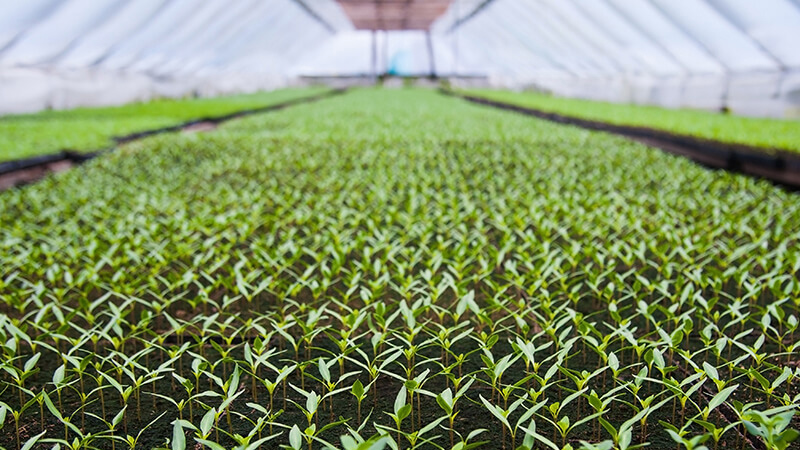How Plant Certification Innovations Can Reduce Grower Headaches

More than 1 billion plant cuttings, mostly annuals and perennials, are imported into the U.S. each year. Delays in the inspection process at the ports can mean loss of quality or even total loss of shipments.
Living plants destined to be grown on, or plants-for-planting in regulatory speak, have long been seen as a potential pathway for the introduction of harmful plant pests and diseases. This is why our domestic and international plant commerce is regulated by USDA and its state counterparts.
For many years, plant protection has depended on port-of-arrival inspection, and silver bullet treatments (such as a pesticide or a fumigant). Silver bullets are hard to find these days. End-point inspection has its own limits; workloads and staffing limitations mean that most plant and plant product imports are inspected at a rate in the single digits.
Given these limitations, in recent years, emphasis has begun shifting to integrated measures or systems approaches, in which two or more specific measures, each with an independent effect, are applied at critical points in the production process. Such measures might include a sanitation step, a treatment, a pest-detection tool, and so forth.
Systems approaches are becoming more the ticket to trade internationally, as well as domestically. They can be overarching, or tailored to a specific pest, like the pelargonium program targeting the pathogen Ralstonia. Typically, they are based on production standards that must be met or exceeded, subject to regulatory oversight or audit. So the regulators’ role shifts considerably from inspecting plants, to evaluating what the grower said he or she would do, and whether they met their commitment.
Here are some examples of what’s going on these days:
Offshore Cuttings Certification Pilot
More than 1 billion plant cuttings, mostly annuals and perennials, are imported each year from production locations mainly in Latin America and Africa, which enjoy favorable growing conditions and labor advantages. These are critical feedstocks for our domestic growers, but any delay in the inspection process at the ports can mean loss of quality or even total loss of shipments.
A new certification program based on a systems approach was piloted at farms in six Latin American countries during the 2017-2018 production and shipping season, which typically peaks in January. Participating operations had to meet or exceed minimum standards for facility design and maintenance, sanitation, water management, pest management, traceability, and record-keeping. AmericanHort and USDA are studying the results of the pilot, which we hope will be expanded and made fully operational in the months ahead.
Presuming successful launch of an operational program, the benefit for participation will be a lower frequency of inspection at the ports of shipments from participating farms. Think of global entry for plant cuttings, with expedited entry meaning a more responsive supply chain and higher quality.
U.S./Canada Greenhouse Certification Program
This bilateral program has been in existence since the mid 1990s. In its early days, the program simply sought to facilitate trade in low-risk, greenhouse-grown plants by allowing them to cross the border without a phytosanitary certificate for each shipment. The program was recently revised and upgraded to a systems approach with similar technical requirements that must be met. A two-year phase-in is underway, with current participants grandfathered in as they make needed adjustments to the revised program.
Systems Approach for Nursery Certification (SANC)
SANC is a domestic certification program developed in a three-way partnership involving the National Plant Board, USDA-APHIS, and industry (primarily AmericanHort and our Horticultural Research Institute foundation, or HRI). HRI has received federal grants to facilitate SANC program development and implementation through the Farm Bill.
Under SANC, a facility-specific risk assessment provides the roadmap for determining critical control points and management measures (typically, industry best practices) that are applied throughout the production process. A pest management plan is a key component of an overall facility manual that guides production, as well as regulatory oversight.
A two-phase pilot program is underway, involving 19 individual plant production facilities from coast to coast. The operations are diverse in their focus; they include greenhouses and nurseries, rooting stations, and finished plant growers serving independent and mass retailers and the landscape sector. Most of the Phase 1 operations are already shipping under SANC certification.
Efforts are now underway to finalize the pilot phase, and to move to full program launch. A related collaborative effort seeks to develop an electronic platform that simplifies the risk assessment and manual development processes.
A big issue with all these programs, in the words of one of our participating growers, is “Is the juice worth the squeeze?” Each program has its obvious incentives. Expedited entry of cuttings means fewer delays and better quality for the customer. The U.S./Canada program expedites trade without the costly and time-consuming requirement of a phyto for every shipment.
The biggest question of all is, will the marketplace reward the innovators? Time will tell, but we think it will. In recent years, we’ve seen more stop-sale and quarantine actions, whether in the production environment or at retail. These things simply suck: they suck up time, money, and customer confidence. Innovations in plant production and certification are not an absolute guarantee, but they mitigate risk, and customers ought to be seeking out the growers embracing them.









